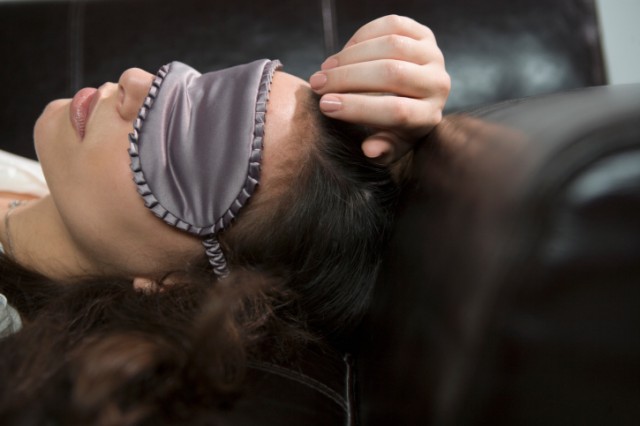There’s nothing lovelier than the sight of a child napping—such a sweet, enviable state, and one that I believe grown-ups should also be able to enjoy, without being thought of as peculiar or lazy. A short twenty-minute power nap has been shown to provide a fresh burst of new ideas and energy, and to eliminate the need for caffeine boosts during the workday (and after, too). Even NASA research supports the idea that napping improves alertness, creativity, and performance in those who make time for a short snooze. Still not convinced? Then you might want to take a look at the New York Times article, which outed many NBA athletes as frequent nappers who use power snoozes to help boost performance—particularly on game days.
OK, so let’s say you’d like to get into a napping groove, but you’re a nine-to-fiver, not an NBA-er. It’s still possible to slip in a mid-day snooze—you just have to think creatively and develop your strategy. Before you know it, you’ll be snoozing like a pro. Here’s how:
Select your spot
Unless your workplace actually encourages napping, snoozing off-site is, career-wise, probably the safest choice, although some of my patients say they can occasionally catch a few zzzz’s at their desk. To reap the benefits of a power nap and truly relax your body and mind, you’ll need a quiet, private spot that’s as close to bed-like comfort as possible. Office-cube dwellers might want to try NYC’s Yelo Spa, which offers twenty- to forty-minute power nap sessions, complete with customized aromatherapy, sounds, and lighting (priced from $15–$28). Another option would be to take a quick nap in your car or, if you live in a big city, in a local park. But bring along a buddy to watch your stuff while you nap, and be ready to return the favor when your buddy needs a power snooze.
Snooze sooner rather than later
Don’t start napping after four o’clock in the afternoon. Later naps can upset your body rhythms, making it harder to fall asleep at night.
Shorter is better
The best naps are brief ones, so keep them short and sweet. The optimal time is said to be no more than twenty minutes. When you drift into the thirty-minute range, sleep inertia tends to set in, leaving you dragging through rest of the day in a post-nap fog. If you “fail” to actually fall asleep, don’t let it bother you, simply use the twenty minutes to meditate and clear your head. You’ll still reap some napping benefits. Eventually, as your body becomes more used to a mid-day break, falling asleep faster for a short nap will become second nature.
Remember the equipment
Aside from a comfortable place to stretch out, the other key ingredient in the power nap pantheon is the alarm clock. Set a clock or timer to keep you from sleeping the afternoon away, and to insure that you return to the land of the alert in a reasonable amount of time.
Set the stage
Too bright to fall asleep? Whip out an eye-mask or a pair of big, dark movie-star shades to help approximate darker conditions. Close blinds and turn off lights. Also remember to completely turn off / power down your desk phone ringer, your iPhone, Blackberry, or anything else that buzzes, whirs, honks, or blinks to prepare your napping environment. When total silence isn’t possible, add a pair of headphones and play soothing, instrumental music to help you drift off.
Welcome back
When the alarm goes off, you must obey! Get right up before you start sleepily hitting the snooze button. Splash some cold water on your face, flip the lights and your computer back on, and try jogging in place or moving around for a minute to restart your brain and body.
Dr. Frank Lipman is an acclaimed Integrative Physician and the founder and director of the Eleven Eleven Wellness Center in New York City. For over 20 years his personal brand of healing has helped thousands of people reclaim their vitality and recover their zest for life. Focused on sustainable wellness—instead of quick fixes—he offers patients a customized blend of Western medicine with acupuncture, nutritional counseling, vitamins and herbs, relaxation techniques, physical therapy, and bodywork. In 2010 he developed Be Well by Dr. Frank Lipman, a line of leading-edge supplements and health programs. He is the author of Revive: Stop Feeling Spent and Start Living Again and Total Renewal: 7 Key Steps to Resilience, Vitality and Long-Term Health.
For more on Dr. Lipman, please visit his resourceful WEBSITE or on FACEBOOK or TWITTER.












